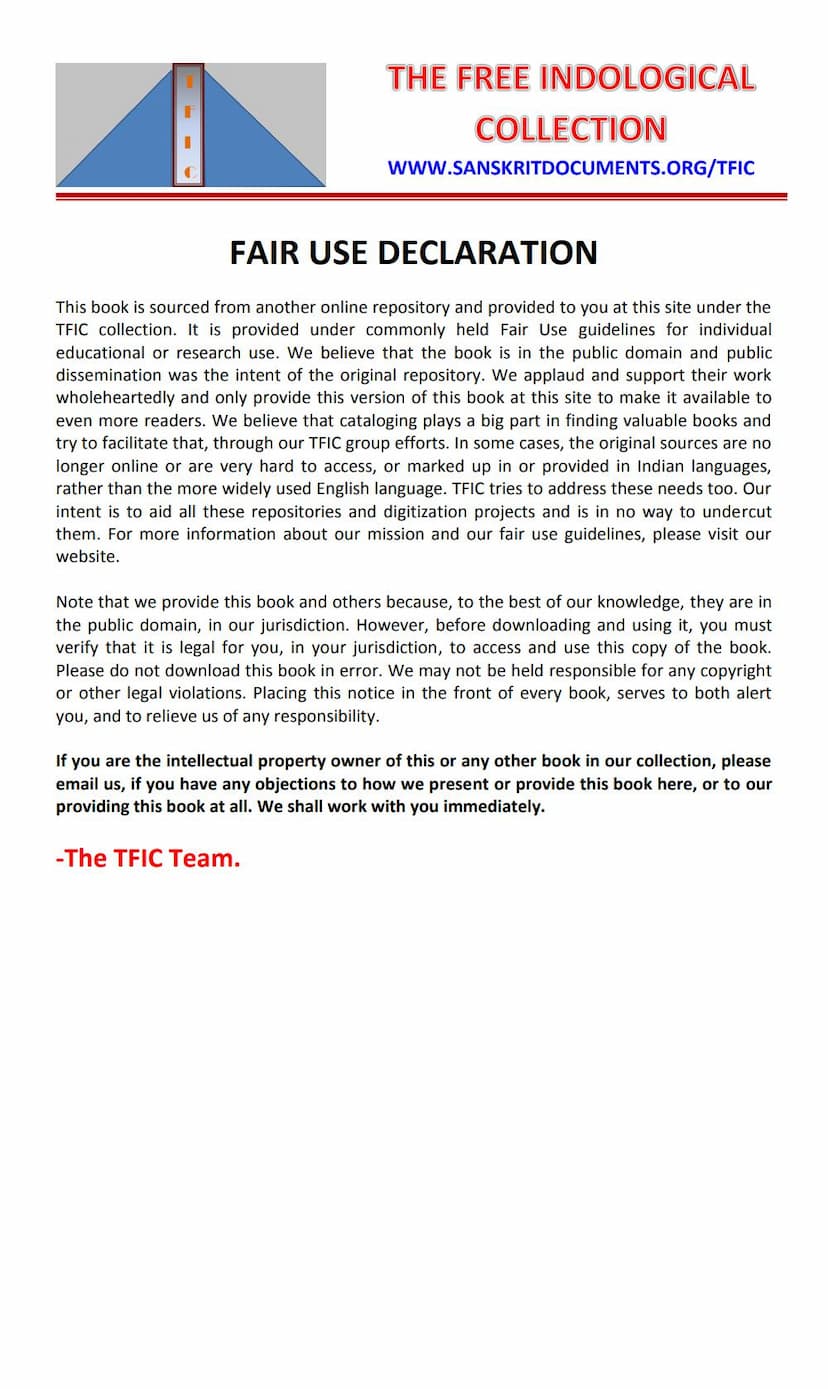Jain Ramayana Purvarddha
Added to library: September 2, 2025

Summary
Here's a comprehensive summary of the "Jain Ramayana Purvarddha" by Shuklchand Maharaj, based on the provided text:
Book Title: Jain Ramayana Purvarddha (First Part of the Jain Ramayana) Author: Jain Muni Shri Pandit Shuklachand Ji Maharaj Publisher: Bhimsen Shah, Rawalpindi Wale, Sadar Bazar, Delhi Overall Theme: This work is a Jain adaptation of the epic Ramayana, presenting the narrative through a Jain philosophical and cosmological lens. It emphasizes renunciation, spiritual discipline, and the Jain understanding of time cycles and celestial beings.
Key Aspects and Content:
-
Jain Cosmology and Time Cycles: The book begins by meticulously explaining the Jain concept of time, particularly the Avasarpini (descending) and Utsarpini (ascending) cycles, each divided into six "Ares" (stages). It details the characteristics of beings and events in each stage, including the lifespan, happiness, and societal structures. This cosmological framework sets the stage for understanding the characters and events within the Ramayana narrative from a Jain perspective.
-
Jain Pantheons and Historical Figures: The text introduces various Jain spiritual and historical figures, including:
- 24 Tirthankaras: Their names and distinguishing symbols (like Rishabhdev's bull, Ajitnath's elephant) are listed.
- Chakravartis (Universal Emperors): Twelve such figures are mentioned, including Bharat, Sagar, and others, describing their roles and achievements.
- Vasudevas and Pratīvasudevas (Karmavataras): Nine of each are listed, detailing their actions and interactions, often involving conflict and eventual destruction for Pratīvasudevas.
- Baldevs and Naradas: Their presence and roles in different eras are also outlined.
- Kamavataras: Twenty-four figures associated with desire and their detached nature are mentioned.
- Kula'kars (Manu): Fourteen figures who established lineages and societal norms are introduced.
-
The Ramayana Narrative through a Jain Lens:
- Lineages: The narrative begins by tracing lineages, including the Bali dynasty, Indra dynasty, and Ravana dynasty, providing detailed descriptions of their kings, cities (like Lanka), and interrelationships.
- Character Origins and Relationships: The text explains the origins of key characters like Hanuman. It reinterprets the relationships and conflicts, often placing them within the broader context of Jain ethical principles and karma.
- Key Events: The summary covers events such as:
- The lineage of the Suryavansha (Solar Dynasty) leading up to Rama.
- The birth of Shri Ram and Lakshman.
- The abduction of Sita and Bhamandal.
- The reasons for Vanvas (exile).
- The interactions with characters like Jatayu and Shabari.
- The conflict with Ravana and his lineage (though the detailed conflict with Ravana seems to be covered in later parts of the Ramayana, this section lays the groundwork by introducing his family and kingdom).
- Specific episodes like the Shurpanakha incident and its aftermath are presented within the Jain framework.
- The narrative also includes dialogues, such as the one with Parashurama, and the education of Sita.
-
Emphasis on Ethics and Renunciation:
- The "Prakashiya Vaktavya" (Publisher's Statement) highlights Indian culture's emphasis on "utsarg" (sacrifice/renunciation) over "grahan" (acquisition).
- The Bhumika (Introduction) by Dwijkumar Shastri, M.A., Nyayateerth, reinforces this, stating that the Jain Ramayana is a concise version of this culture, embodying the essence of national civilization and culture. It showcases ideal conduct in relationships and provides solutions to life's complex problems, advocating for the study of this scripture for personal and social upliftment.
- The text frequently describes characters, including Kings and even the main protagonist, eventually embracing Vairagya (detachment) and taking Diksha (initiation) into asceticism, a central theme in Jainism.
-
Structure and Content of the "Purvarddha":
- The book is divided into numerous chapters (indicated by the "Vishay Suchi" or Table of Contents), covering a wide range of topics from prayers and Tirthankara descriptions to detailed genealogies and narrative events.
- The "Prakashiya Vaktavya" mentions the addition of new episodes in this edition, such as the "Parashurama Samvad" and the "Ahilya Prakaran."
- The "Prarthana" (prayer) at the beginning invokes the Tirthankaras and highlights the importance of devotion and understanding the path to liberation.
- The "Shishya Prashna" (Disciple's Question) section features a dialogue between a disciple (Indrabhuti Gautam) and a spiritual teacher (implied to be Lord Mahavir), where the disciple inquires about the classification of souls, time cycles, and the nature of "Avatars" (divine manifestations or significant beings). This dialogue serves to explain the Jain cosmology and pantheon.
In Essence:
The "Jain Ramayana Purvarddha" is not merely a retelling of the Ramayana. It's a reinterpretation that integrates the familiar narrative with the profound philosophical tenets of Jainism. It aims to provide spiritual guidance, ethical examples, and a cosmic understanding of existence, illustrating how even epic heroes and events can be viewed through the lens of karma, renunciation, and the pursuit of liberation (moksha). The text serves as a didactic work, teaching Jain principles through a beloved and widely recognized story.